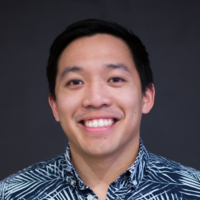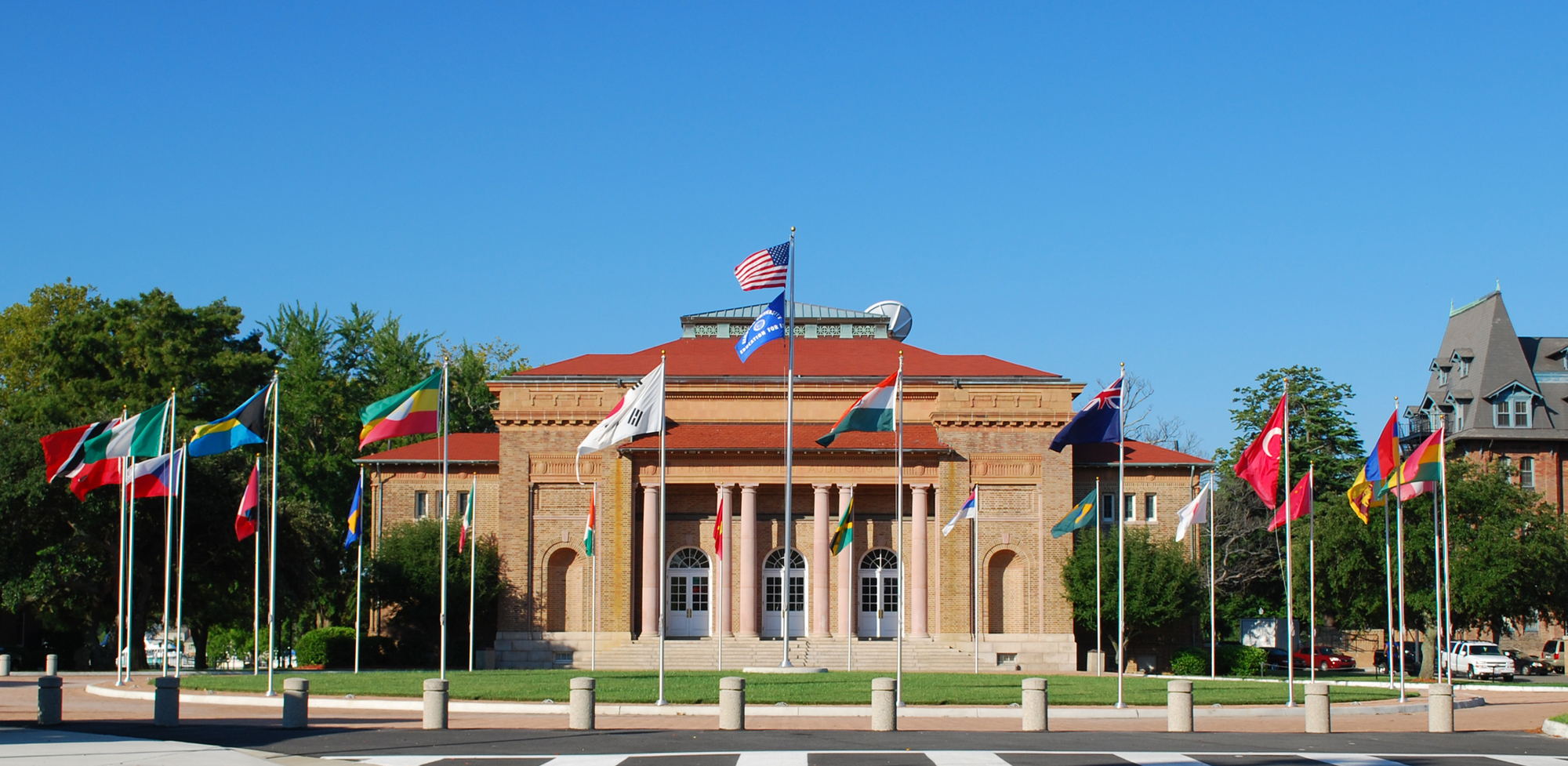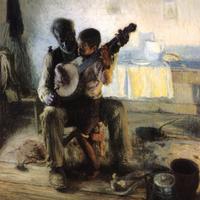More about Hampton University Museum
Works at Hampton University Museum

Contributor
Samuel G. Armstrong, Hawaiian-born general for the Union and leader of the 8th and 9th regiments of the United States Colored Troops during the Civil War, founded the Hampton Normal and Agricultural Institute in 1868 in the wake of the Emancipation.
Although free, a whole generation of black people was left without skills and training that would give them a stake in the market. The Institute was built to allow black students to receive further education to become teachers in their own right, while acquiring additional trade skills in exchange for manual labor. Within its campus lay the Curiosity Room, also built in the same year, which was built to demonstrate to students what the finished products of their education would look like. Imagine what the ones who wanted to be surgeons, doctors, and butchers saw.
The first articles to be exhibited in the space were textiles from Armstrong’s place of birth: Hawaii. When Hampton University established its first African American Studies program in the 1870s, African works were added to the collection, bolstered by William Sheppard’s visit to the Kuba Kingdom from the 1890s to the 1910s. Sheppard, an alumnus of Hampton, was the first African American to collect art from what is now known today as the Democratic Republic of the Congo. Several hundred items were added to the collection. The museum acquired more pieces from a surge of Native American admissions from 1878 to 1923, as well as a donation from an American who tutored in Japan in 1918, and a donation of Philippine works four years before that. Today the museum contains the largest collection of ethnic artworks in the South, with over 9000 works from across the globe.
Another crowning jewel of the Hampton Museum lies in its African American collection, which alone sports 1500 artworks. Henry Ossawa Tanner’s most acclaimed work, The Banjo Lesson, has laid here since its acquisition in 1894. In 1967, the Harmon Foundation donated its bulk of work from the Harlem Rennaisance, bolstered by Countee Cullen’s poetic work donated by his widow. The largest collections of the works of John Biggers, Elizabeth Catlett, Jacob Lawrence, Richmond Barthe, and Samella Lewis live in the Hampton’s halls.
In a realm that often shows works from around the world but is headed by whites, it is a refreshing sight to have a person of color, especially a female one, keeping an eye on the world’s treasures: Dr. Vanessa Thaxton-Ward has acted as curator for the museum since 2016.
Sources
- “Collections : Hampton University Museum.” n.d. Hampton University Museum. Hampton University Museum. Accessed July 31, 2019. http://museum.hamptonu.edu/collections.cfm.
- Hammond, Jane. 2019. “Explore 150 Years of Hampton University History in New Exhibit.” Dailypress.com. July 28, 2019. https://www.dailypress.com/news/education/dp-fea-hampton-university-mus….
- “Samuel Chapman Armstrong.” n.d. Hampton.edu. Hampton University. Accessed July 31, 2019. http://www.hamptonu.edu/about/armstrong.cfm.

Contributor
The signature piece in the collection of the Hampton University Museum in Virginia is its era-defining Henry Ossawa Tanner masterpiece, The Banjo Lesson.
Tanner's mother, Sarah, was born a slave in the Land of the Free, and grew up regarded by the legal system as a financial instrument, a symbol of the speculative interests of her owners, regardless of their personalities and whatever emotions they had toward her. When she escaped to the North via the Underground Railroad, she was in the uncanny position of stealing the most valuable kind of property that the South had—her own individual body and soul. Denial ain't just a river in Egypt: the emotional indigestability, and sheer bizarreness, of the fact that the entire United States exists on a historical foundation of people whose very lives are property, for whom "stealing away" was more than just a turn of phrase, makes the Hampton University Museum essential to the ability of the United States to tell a coherent story about itself.
Like Loïs Mailou Jones, Richard Wright, Josephine Baker, Maya Angelou, and many others, Tanner realized that he could only survive if he went overseas, so he made his home in France for most of his career. In the U.S., you had to have the complexion for the protection. In the eyes of the U.S., he said, "I’m Henry Tanner, Negro artist, but in France, I’m ‘Monsieur Tanner, l’artiste américaine.‘" The Hampton University Museum notifies the world that the U.S., just as it is built on indigenous land, derives its own nationhood from its Black people, whose return to Africa converses with European art and ideas, because the ancestral languages were forcibly removed in the Middle Passage. Still, the many works in the collection which focus, like The Banjo Lesson, on music, suggest that there is something in the music that was never lost, and that makes U.S. music, and all the music of the Americas, distinctly African.
The Museum was founded as a "curiosity room" by General Samuel C. Armstrong, who also founded the University, which served black and native pupils when they were forbidden to attend other universities. The Museum is the first African American museum in the U.S. It's a Black Art Museum in the sense that it focuses, in part, on works by artists whose Africanness has excluded them from other institutions and from the recognition of critics and historians. It also features a collection of indigenous art, a collection of "historic vignettes," and a separation between its African American collection and its African collection, acknowledging the connection of the two while maintaining their distinctness. The Museum is saying, in much more refined words, just cause it's white don't make it right. The Louvre and the Smithsonian would be wise to consciously emulate them, and devote their energies to providing a perspective that goes beyond the boundary of European colonial ambitions.
Next time you're in the South, check out The Art of Africa: Power, Beauty, Community, the Museum's collection of Kuba art from the Congo region, collected by William H. Sheppard, Hampton Alumnus and the first Westerner to enter the region. Have a look at the sixty-three Harriet Tubman and Frederick Douglass paintings, once lost, by the young Jacob Lawrence. Also see the twenty-nine piece Countee and Ida Cullen Art Collection, donated in the name of the great poet by his widow. Countee Cullen once wrote,
We were not made to eternally weep.
The night whose sable breast relieves the stark,
White stars is no less lovely being dark
Sources
- "Collection History." Hampton University Museum, http://wp.hamptonu.edu/msm/collection-history/.
- Erickson, Mark St. John. "ARTIST CAPTURED ADMIRERS AFTER DOUGLASS, TUBMAN." The Daily Press, Jan. 15, 1995, https://www.dailypress.com/news/dp-xpm-19950115-1995-01-15-9501130250-s….
- "From the Dark Tower." PoemHunter, https://m.poemhunter.com/poem/from-the-dark-tower/.
- Hammond, Jane. "Explore 150 years of Hampton University history in new exhibit." The Daily Press, Jan. 20, 2018, https://www.dailypress.com/news/education/dp-fea-hampton-university-mus….
- "Hampton Historic Vignettes." Hampton University Museum, http://wp.hamptonu.edu/msm/hampton-historic-vignettes/.
- "Hampton University Museum." AfroVirginia, http://afrovirginia.org/items/show/192.
- Hultgren, Mary Lou. "Congo Across the Waters." IRAAA+, http://iraaa.museum.hamptonu.edu/page/Kongo-across-the-Waters.
- Khalid, Farisa. "Henry Ossawa Tanner, The Banjo Lesson." Smarthistory, Sep. 9, 2016, https://smarthistory.org/tanner-banjo/.
- Matthews, Marcia M. Henry Ossawa Tanner: American Artist. Chicago: University of Chicago Press, 1995.
Featured Content
Here is what Wikipedia says about Hampton University Museum
Founded in 1868 on the campus of Hampton University, the Hampton University Museum is the oldest African-American museum in the United States and the oldest museum in Virginia. It is the first institutional collection of work by African-American artists, and also has the South's largest collection of ethnic art, including African and American Indian art and artifacts. With galleries dedicated to African American, African, American Indian, Asian and Pacific art and artifacts, the museum contains more than 9,000 objects representing cultures and people from around the world.
Check out the full Wikipedia article about Hampton University Museum












It is a wonderful museum. Thanks for reminding me that I am due for a visit!